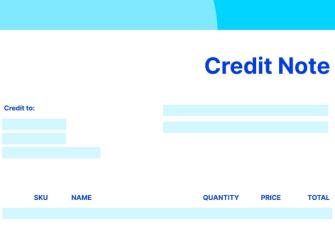What are Freelance Payment Terms?
The life of a freelancer can be stressful enough without having to chase payments from clients. Getting paid in full on time not only helps you pay your bills, but it also helps you get a better grip on your accounting and gives you a better sense of security.
When it comes to receiving payments, it always helps to be clear about how and when you want to be paid. The best way to go about this is by setting payment terms with your client when you accept a job.
Payment terms are a great way to formalize a professional relationship and ensure that you get paid when you need it. In this blog, we’ll help you understand what payment terms are, what they look like in practice, and how to implement them in your dealings with clients.
An introduction to payment terms
Payment terms are essentially a set of instructions that you set out for your clients on how and when you are to be paid. Depending on your personal preference, they may also lay out a set of guidelines for the client to follow, such as a specific timeline for the project. In general, they would be included in your invoices, contracts and all official communications with the client.
As a rule, your payment terms should also outline how you deal with late payments, your preferred payment method, and whether or not you offer discounts under certain circumstances. Think of payment as your own personal terms and conditions that your clients have to agree to before you start work.
Much in the same way that a well-structured invoice speeds up processes, well defined payment terms make life easier for you and your clients. Small business owners like sole traders depend on prompt payments so getting your payment terms right is in your best interest.

What payment terms should you include?
As a freelancer, it’s up to you which payment terms to include. Generally, we would recommend that you include the following terms in your invoices:
Late payment terms
Most freelance invoices specify that they are to be paid within 30 days of the work or project being completed. While we would hope that your clients pay you on time, this sometimes won’t be the case.
In the event that a client misses the due date, you have a few options. Many freelancers choose to include late payment fees in their invoices that clearly state when payment is expected. This means that if the client is sluggish to pay, your invoice will start incurring fees and interest.
For some clients, the threat of an increasing bill is enough to encourage them to pay on time. You may choose to charge a flat rate per missed number of days or an interest rate based on the project budget.
Payment due dates
It’s good practice to include a due date for when you expect to be paid for your work. Being consistent with your due dates allows you to have greater control over your finances and give you a better sense of stability.
Depending on the job, due dates are generally set out in this way:
- Net 7 - this means that payment is expected no later than 7 days after its completion
- Net 15 - with net 15, clients are expected to pay no later than 15 days after they receive the work
- Net 30 - this is the most common due date. It means that payment is due 30 days after the completion of the work
- Payment in advance - with some projects, you may choose to be paid before the work is complete. This can be good practice if you’ve never worked with the client before or if you anticipate the project taking a long time.
- Due upon receipt - if you need the money for a job immediately for whatever reason, this is the due date you should choose. This due date ensures that you will get paid as soon as your client receives the receipt for their work.
Using due dates to keep track of where and when your next payments are coming from is a great way to manage your cash flow. Freelancing can be a precarious profession so anything that adds to your stability is a good thing.
Payment methods
This is very simply how you would like to be paid. Different freelancers prefer to be paid in different ways. One method may be convenient to you but a major annoyance to someone else. The most common ways to accept payments is by bank transfer, with debit or credit cards, or by cheque.
When compiling your payment terms, take a moment to work out which payment method works best for you. This will save you time and trouble in the long run.
Discounts
Building goodwill with your client base is never a bad idea. Discounts on your goods or services are a simple way to build customer loyalty. Whether or not you want to offer them is completely up to you so never put yourself in a bad deal for the sake of a discount.
There are a variety of reasons that you could offer a discount. For instance, you could offer discounts for early payment, referrals, new clients, and the guarantee of further work and larger contracts.
Currency
As your reputation and client pool grows, there is a good chance that you may end up working with international clients. When and if this happens, it’s very important to lay out what currency you want to be paid in.
Exchange rates are always changing. This means that if you have to exchange a payment from an international client yourself, you may lose out on the full payment. Ensuring your payment terms are clear about the currencies you’ll accept means that you’ll always be paid the correct amount for your work.
An POS solution for everybody
Payment terms are just another tool in the freelancer toolbox that can help you secure success. The best freelancers deserve the best small business software around. That’s where Epos Now comes in.
Epos Now offers state-of-the-art POS systems for businesses in retail and hospitality. We let you choose the tools and insights to help your business achieve its goals. Designed to work as a complete business management system, you can control all vital aspects of your company from one cloud-based system.
Receive detailed analysis on the areas that matter to your business:
- Review profitability reports based on individual product performance, trending items, best and worst sellers, and employee sales
- View sales analyses on profit margin, cash flow, and other expenses
- Access multi-award-winning inventory management systems that sync online sales and in-person sales for the most up-to-date stock levels
- Automate stock purchasing so you never miss a sales opportunity
- Create and send invoices using simple templates and a built-in VAT calculator
- Customer management systems that save customer contact details and shopping preferences for more targeted marketing.
- Schedule emails and SMS messages to be sent at the most impactful time of day
- Integrate with the business automation apps that are right for your business
- Simplify employee management for more efficient scheduling and payroll
If you’d like to learn more about our industry-leading software, contact us today.




